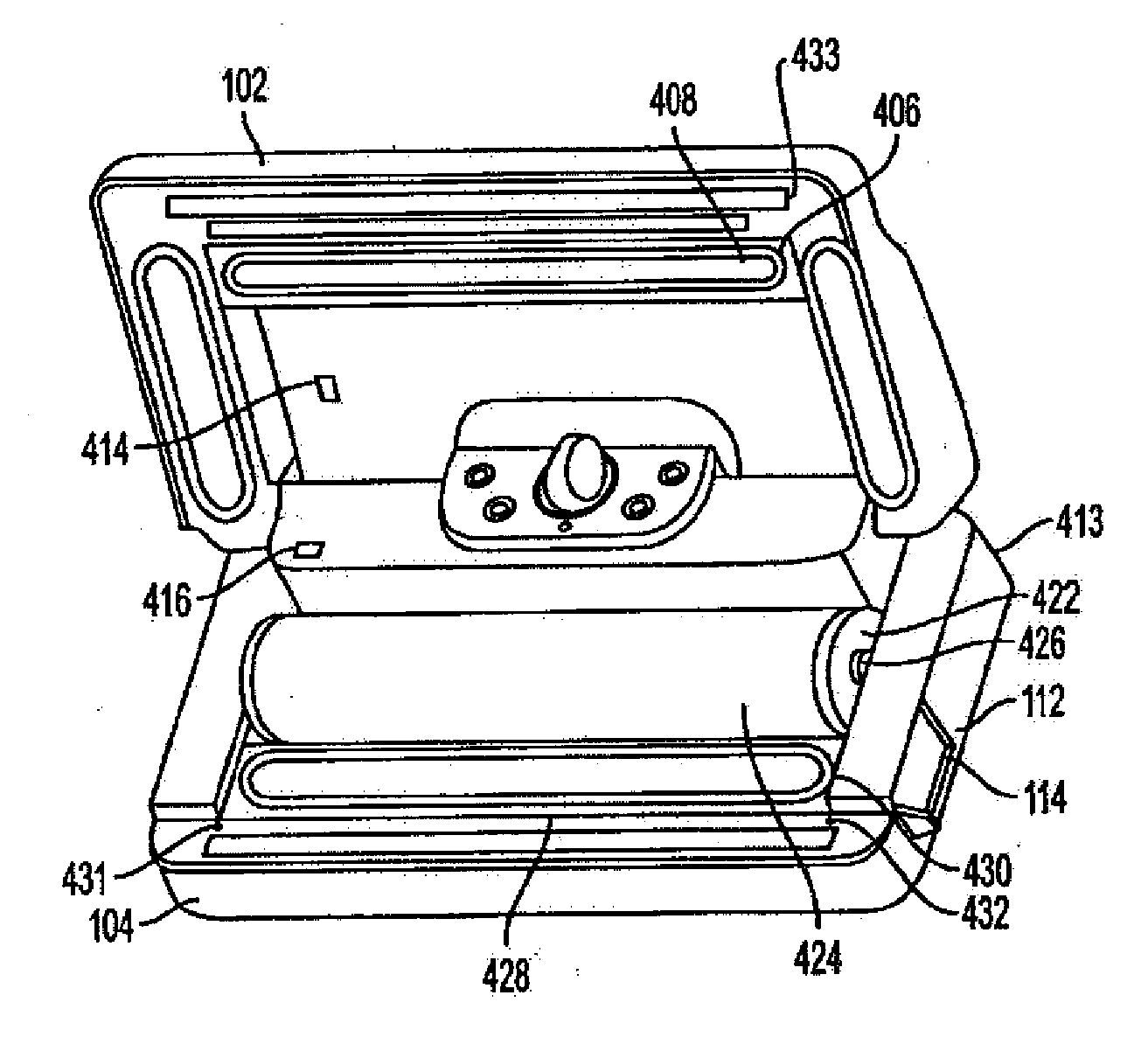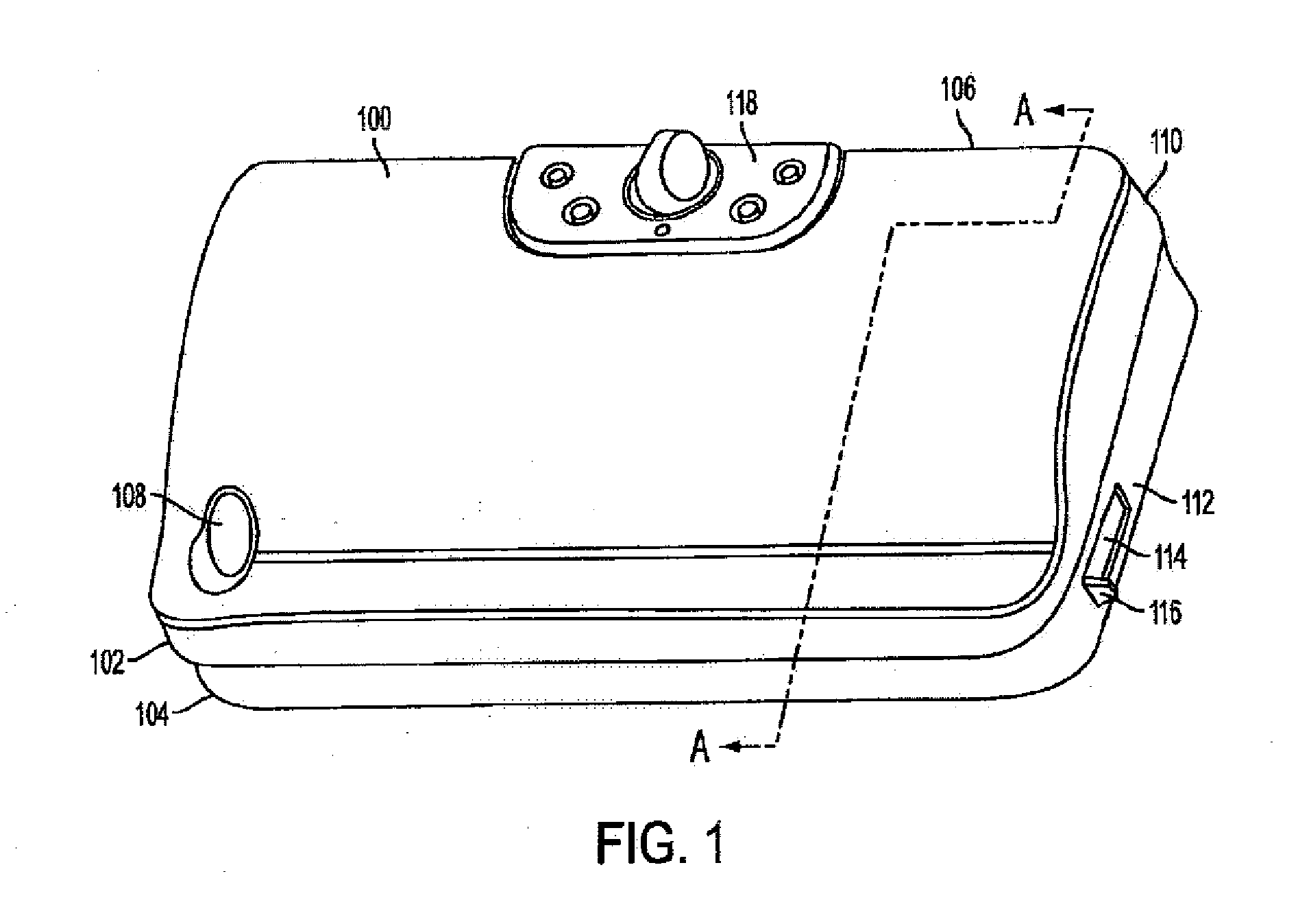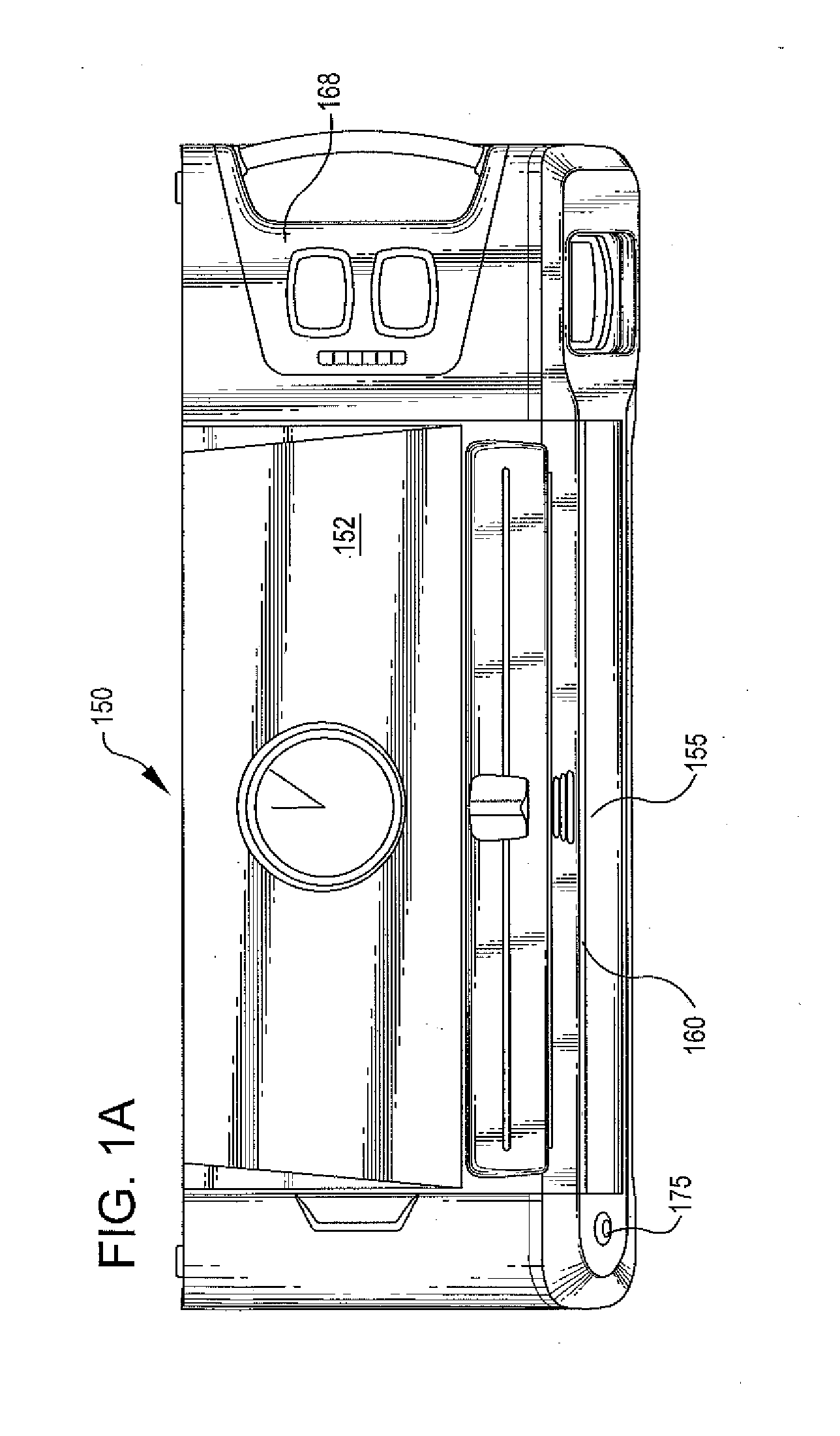Heat sealer with algorithm for regulating sealing temperature
a technology of sealing temperature and algorithm, applied in the field of heat sealing, can solve the problems of limited success in hermetically sealing the evacuated bags, complex construction and/or cumbersome operation, and high manufacturing cost of conventional commercial appliances and some consumer appliances
- Summary
- Abstract
- Description
- Claims
- Application Information
AI Technical Summary
Benefits of technology
Problems solved by technology
Method used
Image
Examples
Embodiment Construction
[0040]The present invention sets forth several embodiments relating to the position and control of heat sealing elements within vacuum packaging appliances.
[0041]The heat sealing element may be mounted on the lid or the base of the appliance. The placement of the heat sealing element within the appliance minimizes wasted bag material, as the heat seal is placed closer to the end of the bag itself. The present invention also includes a heat sealing controller that may adjust the amount of current applied to the heat sealing element based on a number of different inputs. It will be understood by those skilled in the art that the description of the methods and structures of the vacuum packaging appliance described below is not intended to be limiting in anyway.
[0042]FIG. 1 shows a vacuum packaging appliance 100 for vacuum packaging articles in a container. The vacuum packaging appliance 100 has a lid 102 and a base 104 that are pivotally connected at a back side 106 of the appliance 10...
PUM
| Property | Measurement | Unit |
|---|---|---|
| threshold temperature | aaaaa | aaaaa |
| threshold temperature | aaaaa | aaaaa |
| length | aaaaa | aaaaa |
Abstract
Description
Claims
Application Information
 Login to View More
Login to View More - R&D
- Intellectual Property
- Life Sciences
- Materials
- Tech Scout
- Unparalleled Data Quality
- Higher Quality Content
- 60% Fewer Hallucinations
Browse by: Latest US Patents, China's latest patents, Technical Efficacy Thesaurus, Application Domain, Technology Topic, Popular Technical Reports.
© 2025 PatSnap. All rights reserved.Legal|Privacy policy|Modern Slavery Act Transparency Statement|Sitemap|About US| Contact US: help@patsnap.com



